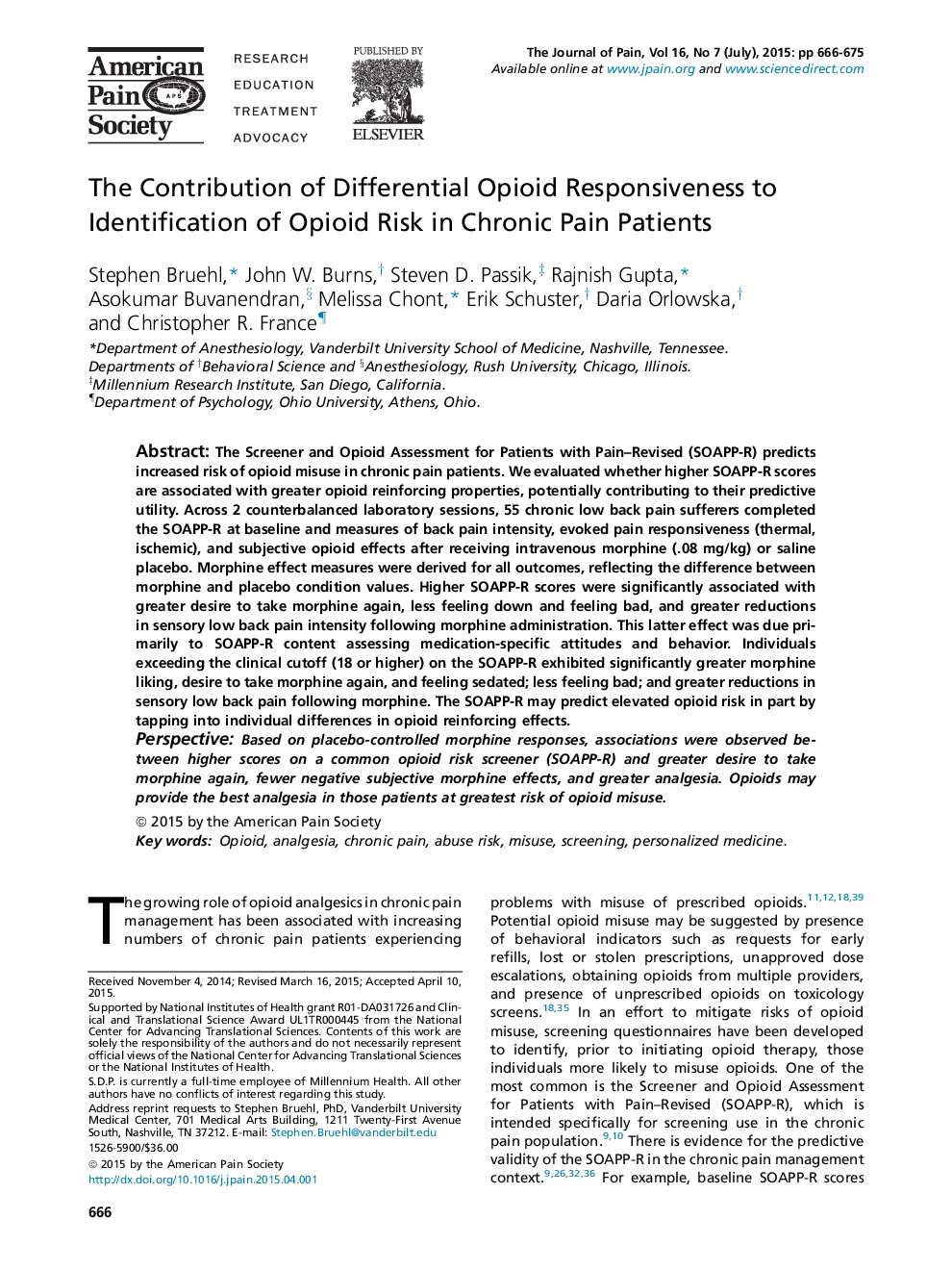| کد مقاله | کد نشریه | سال انتشار | مقاله انگلیسی | نسخه تمام متن |
|---|---|---|---|---|
| 2731988 | 1566731 | 2015 | 10 صفحه PDF | دانلود رایگان |
• Elevated risk for opioid misuse as indexed by a common opioid risk screening instrument (ie, the Screener and Opioid Assessment for Patients with Pain–Revised [SOAPP-R]) was associated with experience of greater positive and less negative subjective effects following morphine administration and greater morphine analgesic effects on low back pain.
• SOAPP-R content assessing medication-specific attitudes and behavior was somewhat more predictive of opioid responses than negative affect–related content.
• Opioids may provide the best analgesia for chronic pain in those at greatest risk of opioid misuse, a finding with implications for personalized pain medicine.
The Screener and Opioid Assessment for Patients with Pain–Revised (SOAPP-R) predicts increased risk of opioid misuse in chronic pain patients. We evaluated whether higher SOAPP-R scores are associated with greater opioid reinforcing properties, potentially contributing to their predictive utility. Across 2 counterbalanced laboratory sessions, 55 chronic low back pain sufferers completed the SOAPP-R at baseline and measures of back pain intensity, evoked pain responsiveness (thermal, ischemic), and subjective opioid effects after receiving intravenous morphine (.08 mg/kg) or saline placebo. Morphine effect measures were derived for all outcomes, reflecting the difference between morphine and placebo condition values. Higher SOAPP-R scores were significantly associated with greater desire to take morphine again, less feeling down and feeling bad, and greater reductions in sensory low back pain intensity following morphine administration. This latter effect was due primarily to SOAPP-R content assessing medication-specific attitudes and behavior. Individuals exceeding the clinical cutoff (18 or higher) on the SOAPP-R exhibited significantly greater morphine liking, desire to take morphine again, and feeling sedated; less feeling bad; and greater reductions in sensory low back pain following morphine. The SOAPP-R may predict elevated opioid risk in part by tapping into individual differences in opioid reinforcing effects.PerspectiveBased on placebo-controlled morphine responses, associations were observed between higher scores on a common opioid risk screener (SOAPP-R) and greater desire to take morphine again, fewer negative subjective morphine effects, and greater analgesia. Opioids may provide the best analgesia in those patients at greatest risk of opioid misuse.
Journal: The Journal of Pain - Volume 16, Issue 7, July 2015, Pages 666–675
